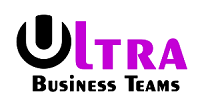It’s likely that there will be an overwhelming quantity of information to digest throughout the property hunt. You must be completely aware of the conditions of the loan as well as your eligibility before submitting an application. The number of loans available overall and the mortgage rates in Idaho is only two components of the whole picture. Give the advice and information below your undivided attention if you want to get the most out of the money you have.
Rates of Interest
How reliable and timely a person has been in the past when it comes to completing bill payments has a significant influence on their credit score. You should review your credit score and, if necessary, fix any problems before sending your credit report to prospective mortgage lenders. Making all of your payments on schedule and paying off all of your debt are two of the best ways to focus on raising your credit score. There is still a possibility that you may get a loan even if your credit score is poor. It can be hard to get the money you need.
How Does DTI Work?
Your debt-to-income ratio may be calculated by simply dividing the entire amount you pay each month toward your debt by the monthly gross income you earn (DTI). Knowing your DTI can help you create realistic goals for your spending plan and determine how much you can afford to pay each month. Mortgage lending businesses and other financial institutions may take into account your debt-to-income ratio (DTI) when determining whether or not to provide you with a loan.
Employment Background
If you can show that you have been gainfully working for at least two years and have been able to keep a stable income throughout that time, you will have an easier time convincing a lender to grant you a loan. Lenders will still want to see proof that you have a steady job or contract work, even if you are self-employed. If at all feasible, wait to change jobs until after receiving mortgage pre-approval or after you’ve done looking for a home. As a result, it’s probable that you won’t have the money on hand to finish the transaction.
Unanticipated Costs
It will be much easier for you to get a mortgage if you make a decent living and have a high credit score. The time it will take you to pay off the debt will be shortened if you can make larger payments upfront. However, the vast majority of borrowers are often required to make a down payment. It won’t be too challenging if you get a head start on saving for a down payment.
Loan Term
If you contribute a significant amount up front toward the purchase of the home, you may be able to negotiate a loan term of 10 or fifteen years as opposed to the customary thirty years. A financial organization that provides loans with periods between 10 and 30 years is an option. Additionally, if the monthly payment amount is raised, the loan will be paid off sooner.
How Do Your Financial Situations Look?
Putting your financial security at risk in order to save for a down payment or buy a house is never a wise decision. Think about how the creation of a strategy for the future might be influenced by your present financial situation. So you’re debating whether or not to take the risk of creating a family, am I correct? Do you need to locate your mother-in-law in a new place to live? It’s probable that fewer individuals will be employed today than there were before. Even though you can’t plan for everything that can happen, it’s important to approach your budget with an open mind.
Learn about your loan.
Conventional home loans are mortgages that are made to the requirements of lending institutions and are backed by Fannie Mae or Freddie Mac. The loans are supported by the Federal Housing Administration (FHA) and the Department of Veterans Affairs (VA), and both of these organizations provide a guarantee for the loans they sponsor. Any mortgage used to finance the purchase of a property that is not backed by the federal government is referred to as a “conventional mortgage.”
The bulk of mortgages is not backed by the government in any way. They are required to abide by the rules set out by HUD, Fannie Mae, and Freddie Mac since they are not covered by government insurance. Examples of such requirements may be found in the following:
- Before the loan may be granted, pay stubs or W-2 forms must be shown as proof of the borrower’s income. To apply to become a single proprietor, you must also provide three years’ worth of tax filings and financial records.
- A prospective borrower’s credit must be examined to make sure there aren’t any new red flags (30 days for credit unions). The minimum credit score needed to get accepted is 620, although most lenders want a score of 640 or higher for loans requiring small down payments, such as 80/20 and 85/15 FRMs.
The Federal Housing Administration will support a loan and ensure that it will be repaid (FHA). This specific business provides financial institutions with mortgage insurance as a service. In the event that you are unable to make your mortgage payments as agreed, this coverage will protect the lender from suffering financial loss.
One must fulfill requirements, such as maintaining a certain income and credit score, in order to be eligible for an FHA loan. Other financial obligations like education loans and child support, as well as the ratio of one’s debts to one’s income, should also be taken into account.
United States Department of Agriculture loans, or USDA loans for short, are basically mortgages that may be secured via the USDA. The goal of these efforts is to provide low-income individuals with financial support so they may buy houses in more rural or disaster-prone regions or in locations where they are more likely to experience natural catastrophes.
Some of the qualities that set USDA loans unique from other mortgage programs are as follows:
- The income criteria for a USDA loan are more stringent than those for a conventional or FHA loan.
- For USDA loans, a far lower down payment is often needed than for commercial loans. Depending on how bad your credit is, you can be qualified for a USDA loan with no down payment or as little as 3% down if you’re buying a house in a disaster area or a property in a rural area that meets specific requirements (or both).
The maximum amount that a USDA loan may be for is decided by the property’s assessed value rather than the amount that was actually spent buying the residence. This indicates that, as compared to other forms of mortgages, you could be able to borrow more money with a USDA loan. Finding out that your property has appreciated in value since you initially bought it is incredibly encouraging.
The federal government guarantees both the approval of Veterans Affairs mortgage loans and the interest rates on these loans, which are more often referred to as VA loans. Veterans, current military personnel, and surviving spouses who meet certain requirements may buy a house via the VA Loan Program without having to pay for private mortgage insurance (PMI) (PMI).
In a variety of circumstances, veterans may be able to get loans with no down payment at all. There will be no application costs, and their monthly payments will be determined by their income and the total amount of debt they already owe.
The highest interest rate that a conventional lender may charge by the VA is four percentage points higher than the rate that is currently available in the market. The maximum interest rate that may be imposed on a VA loan has no practical upper limit. However, most lenders set a restriction of 6%.
Conclusion
You may do a number of things in order to get the best mortgage interest rate feasible in light of the information provided above. If you are now unable to check off everything on this list, it is perfectly OK. Don’t worry if you can’t give all of them your full attention at once; even a little effort on each of them at a time can benefit you in the long term. Click here for more information.


